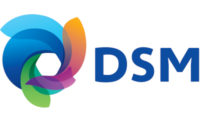Cheddar chatter
Arla and DFA begin a Cheddar cheese joint venture
Construction of the cheese plant, next to DFA’s Craigs Station Creamery ingredient plant, is expected to begin this autumn.

Arla’s decision to get into the U.S. Cheddar cheese business was driven by Americans’ cheese-buying habits. Fully 92% is bought from the dairy case, with 8% in the deli case. And Americans’ appetite for Cheddar is growing. The head of Arla Foods U.S. told Dairy Foods that the European dairy cooperative realized it needed to be in the dairy case with a Cheddar product.
It found a partner in Dairy Farmers of America, based in Kansas City, Mo. The two cooperatives announced today a joint venture to build a Cheddar cheese plant in Livingston County, N.Y., adjacent to DFA’s Craigs Station Creamery ingredient plant. Construction is expected to begin this autumn, with product to be ready a year later.
Don Stohrer Jr., the head of Arla Foods U.S., said the two cooperatives share parallel values and attitudes towards sustainability, milk traceability and animal care. DFA will make Arla-branded cheese from milk from cows not treated with artificial growth hormones. Consumers, especially those in the younger Millennial generation, are label-readers who seek “authentic and better-for-you” foods, Stohrer said. He said the Cheddar probably will be orange, the color most Americans expect. In the Northeast, Cheddar is traditionally white.
Details of the Arla, DFA joint venture
The joint venture will be 70% owned by DFA, 20% by Arla and 10% by the eight farmers supplying the milk. The investment is expected to be $58 million, according to an Arla statement, and the operation will create 30 jobs.
Arla has a plant in Wisconsin and three in Canada, but they are not equipped to make Cheddar, Stohrer said. The plant in Hollandtown, Wis., makes havarti, Gouda, Muenster and fontina cheeses, which are sold in the dairy case.
Arla owns the Castello blue cheese, harvarti brands
Arla has stepped up its marketing of cheeses to the United States. At the end of last year, the co-op introduced its European-made cream cheeses to the United States. Arla’s Castello brand of havarti and blue cheeses, and a U.K.-made Cheddar, are sold in the deli section.
DFA is the second-largest dairy cooperative (after Land O Lakes) in the United States. This week DFA said net sales totaled $13.8 billion for 2015, compared to $17.9 billion in 2014, primarily because of lower milk prices. Consumer sales were not available, but DFA reported sales of $5 billion in 2014, according to the Dairy 100, this magazine’s ranking of North America’s largest dairy processors.
Arla Foods U.S. expects to double revenues by 2020
Arla Foods U.S. is seeking to increase its revenues from the United States. Revenues from consumer sales in 2015 were 123 million euros (about $137.5 million, a 14% increase from 2014). It seeks to double revenues by 2020 (compared to 2014). Worldwide revenues in 2015 were 10.3 billion euro (about $11.5 billion).
Looking for a reprint of this article?
From high-res PDFs to custom plaques, order your copy today!





